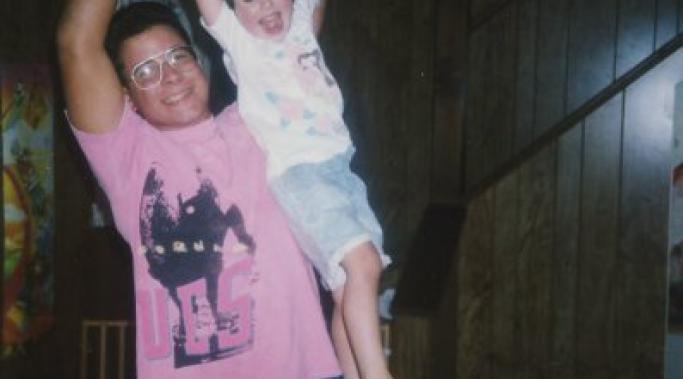We all have moments where flashbacks occur and we want to give in to the unsafe triggers around us. However, even though flashbacks can be haunting to those who self-harm, they can also make you realize how far you have come and how much you have grown. If you look at your past with a positive mindset, even if the past you are looking back at is negative, you may be able to gather a fresh perspective.
Self-Injury Awareness
Feeling as if you are out-of-the-loop with a group of friends or co-workers always brings insecurities to the forefront. The idea of feeling left out does not end in high school or college – it continues through adulthood. Even though many can push feeling left out aside, those with a mental illness often have more difficulty when it comes to doing just that. It all comes down to one word and emotion: insecurity. And insecurity can lead to self-harm.
I’ve stated many times how helpful books can be when overcoming self-harm. There have been numerous books I have discussed that helped me when I was struggling to understand my own addiction to cutting. In a world where self-harm is seen by many as taboo, it is good to fall into a story where the topic is relatable and real.
You never stop struggling when trying to overcome the death of a loved one. In truth, I don’t think there is a way to overcome death at all. It is something that cannot be understood and something that will always remain a mystery. You don’t know how a person felt or what they thought when death arrived and you’ll never be able to find that out. The constant un-knowingness of death keeps our anxieties growing and our minds wondering.
Over the last six years, I have not stopped wondering how my brother felt when cancer conquered him. I continuously ask, “Why him?” and I know that question is the scariest thing you can ask because, sooner or later, you wonder, “Why him, not me?”
Other mental illnesses often cling to the lives of those who self-harm. This may not be the case for all, but for many, it is a struggle that stands alongside the urge to self-injure. This tends to make it even more difficult to stop the unsafe behaviors that self-harmers come face-to-face with on a daily basis. When being attacked by depression, bipolar disorder or schizophrenia, self-harm may seem like the only coping skill that would make the negative factors around them disappear.
We know, as well as anyone else, that is not the case.
Like I’ve said in previous blogs, pets and animals truly are therapeutic. Animals can show the most genuine compassion for their owners and even towards complete strangers. For some, pets may be the only ones in their life who listen to the struggles they’re going through and even though they don’t respond, they physically are able to show they care. The presence of a pet's compassion can decrease self-harm urges.
In fourth grade, I was blessed with a calico cat named Fudge. She had been the independent, somewhat shy cat out of the two my sister and I were given. However, she always slept beside me at night and made some sort of noise when someone walked into the room. During the years I struggled with self-harm and suicidal ideations, she was there to listen and for me to cry to.
We all have days where we feel a rush of emotions. When we feel frustrated, depressed or angry, we tend to take out our frustration on ourselves or on those we love. We don’t mean to become defensive or hurtful, it just happens without thought. For those who struggle with mental illness, holding back these behaviors can take time and practice and is definitely not easy. It isn’t easy to stop the urge to self-harm when triggers are coming at you from every angle.
Sometimes, the negative people around you are those triggers.
We all have days when the morning alarm sounds like a million knives stabbing us in the ears. Everyone has experienced waking up in the worst of moods and not being able to kick yourself out of the funk. On these days, no matter who tries to talk you into a better state of mind or make you laugh, the gestures remain hopeless and so do you.
Some people are able to find ways to turn their mind around and push on towards positivity. Other people, however, grow angry with themselves and that anger doesn’t help the already frustrating situation. When you begin your day in an unhappy mode, it takes a lot to really switch on the positivity, and for those who self-harm, the only way to switch on that happiness may be by making a self-injury mark on his or her skin.
When someone has a bad hair day (as cliché as it sounds), they tend to go for the same hat or hairstyle to find a sense of comfort. Even when finding a seat in classroom or a stall in a bathroom, people tend choose what they are comfortable with and those decisions become almost habitual. The same goes for self-harmers when they feel triggered to hurt their bodies – they make choices based on what they know best.
This also goes hand-in-hand with what is used to cover up self-harm scars. Those who feel the need to cover up self-injury marks typically go for the same kind of solution – bracelets, make-up, long sleeves, etc. Everyone makes certain decisions to protect themselves from feeling a certain way or turning to certain behaviors.
Sometimes it is hard to just sit and focus on the present. We are followed by past memories and are always jumping forward before we even have time to take a breath in the present. It is important to look to the future and learn from past mistakes and triumphs. However, it is also important to absorb the world you are surrounded by now.









